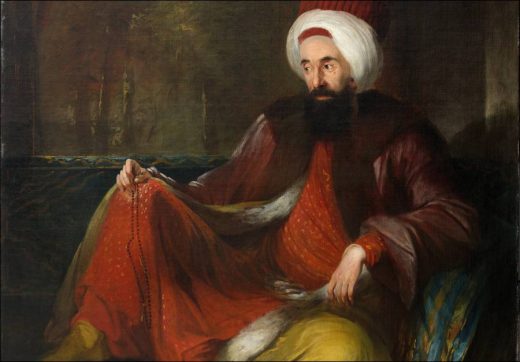At the meeting held in Reisülküttab’s mansion in Bebek in 1793, “According to the European rule, the first permanent embassy of the Ottoman Empire was in England. was established to be established. Yusuf Agâh Efendi, Clerk of Morale Galleons as Ambassador was commissioned. Details of the ambassadorial expedition Robert Ainslie, the British ambassador in Istanbul
After being arranged by Mr., the delegation set out for London in October 1793. Reaching the Port of Ostend via Austria, Germany, Belgium and reaching England by sea passed. The embassy delegation, which crossed the English Channel in a stormy weather, reached Dover, He was greeted with a military band.
General Smith, who welcomed the delegation, wrote to the Secretary of State, Lorg Grenville. Yusuf Agâh Efendi as a “lovable and respectable old man”, his secret clerk Mahmud Raif Efendi “young and reasonable”, citing the lead translator Emanuel Persiani as someone “looking smart, resourceful” had defined. The delegation, which reached London two months after the departure, spent some time in Pall.
After staying at the Royal Hotel in the Mall, the hotel in Adelphi, on the banks of the River Thames, They settled in the residences of their choice on Adams Street. Every Wednesday, King III. George’s top level officials and ambassadors attended their receptions and on Thursdays, Queen Charlotte’s. They attended meetings of the royal family in which women were also present. But Gifts and credentials from Istanbul by sea were sent to London with a delay of eight months.
When they arrived, it was only fourteen years after their arrival, due to the fact that the king had not been in London for a while. After a month, they were able to officially start their duties by presenting their credentials. to the opening of the parliament The place of two hundred guards of more than twenty chariots, which took place on January 29, 1795 by chance.
After the reception, which took place with a magnificent parade, III. sent by Selim such as weapons embroidered with precious stones, Arabian horses in gold harnesses, and silk cloths. gifts were presented to the king, queen, Prince of Wales, Duke of Portland and foreign minister. in London Yusuf Agâh Efendi, who was also present at many invitations attended by high-level bureaucrats, attended the St. Swedish painter Carl Fredrik, famous for the portraits he painted in his workshop on James Street A monumental portrait was also made by von Breda.
Yusuf Agâh Efendi’s mission as ambassador ended in July 1797. His “Havadisname” and Mahmud Raif Efendi’s detailed report in French, besides the political events, economy, social life, the structure of the Parliament and the functioning of the political order, palace customs, It contains observations on many subjects such as the city of London, universities and factories.
Visits: 138



